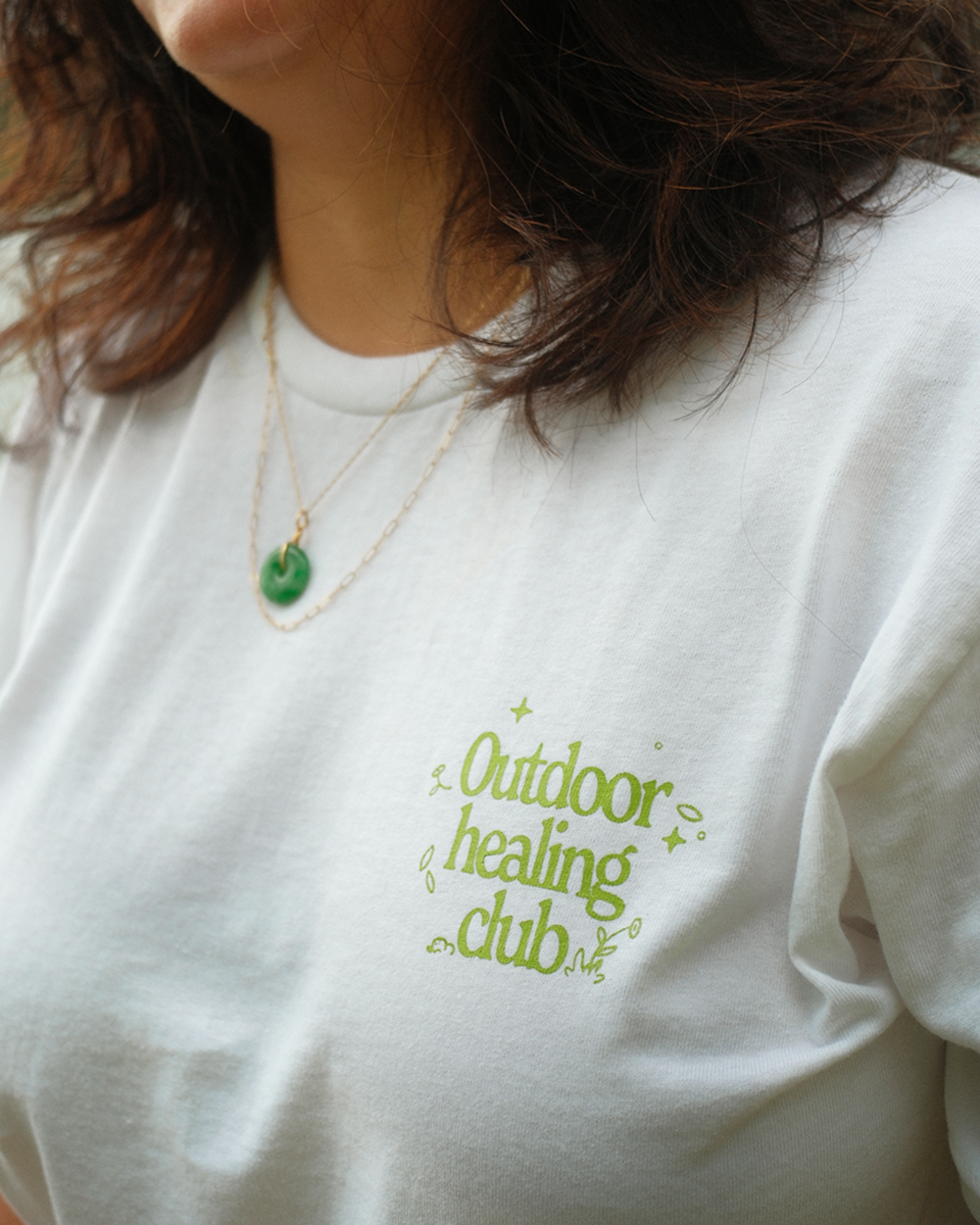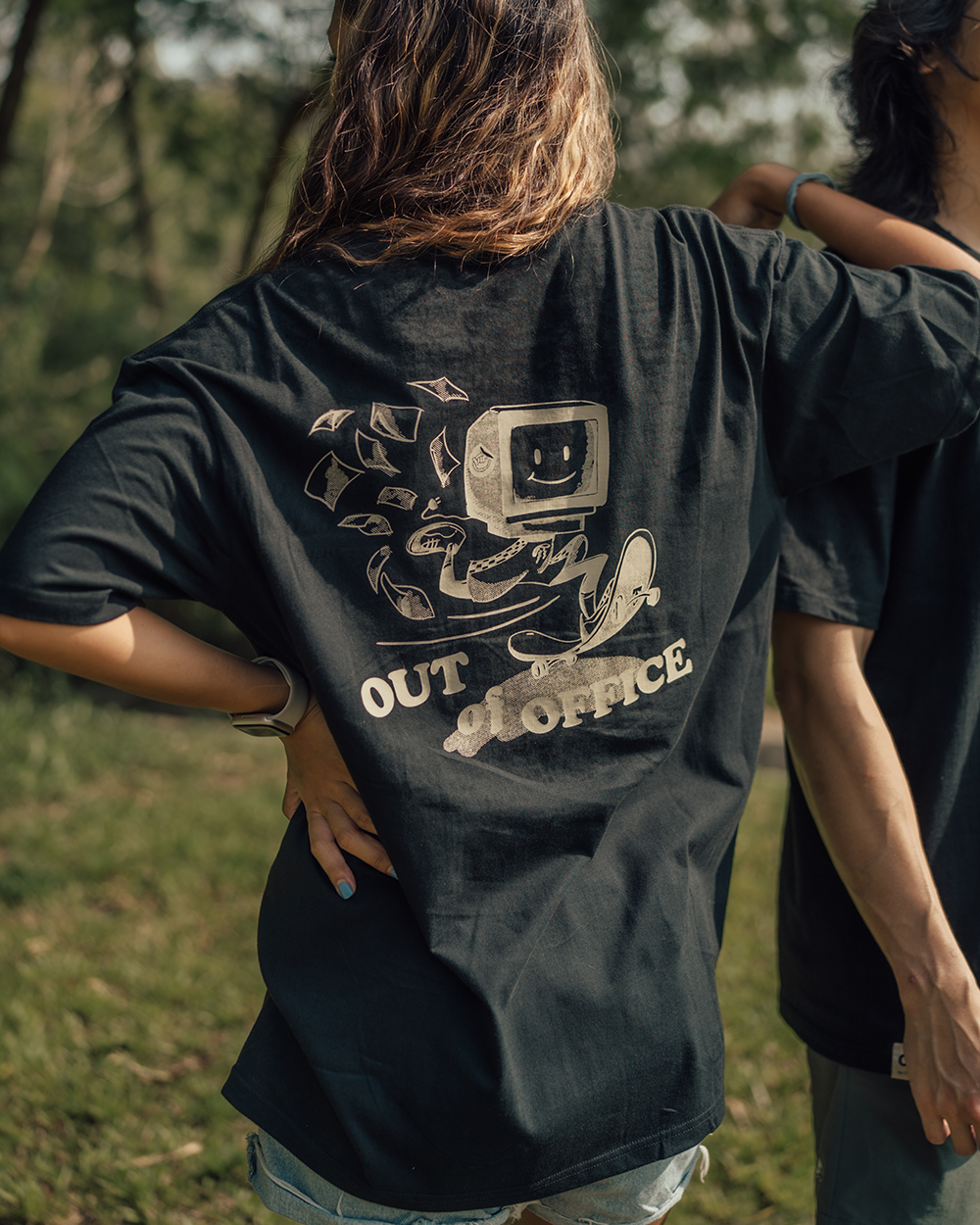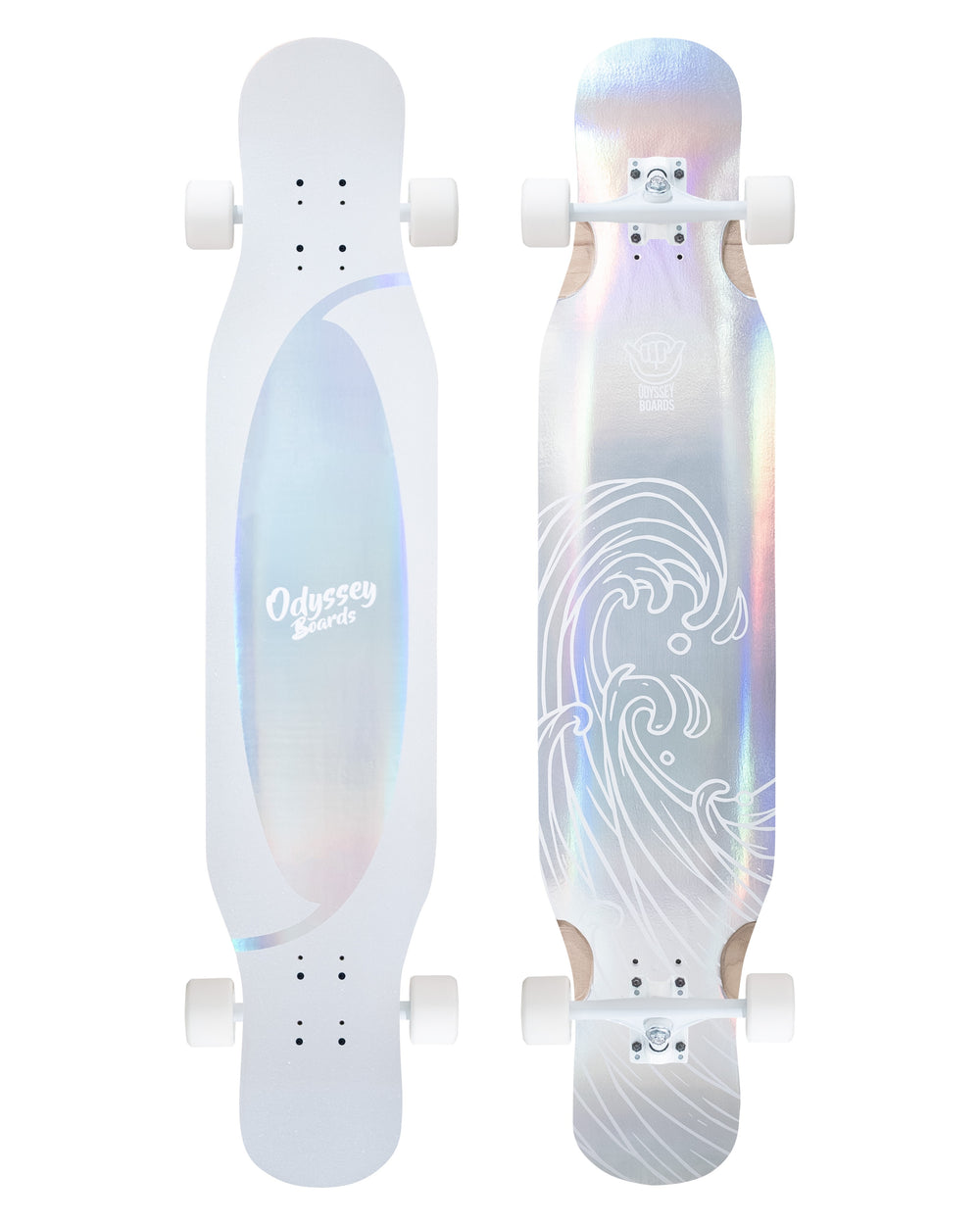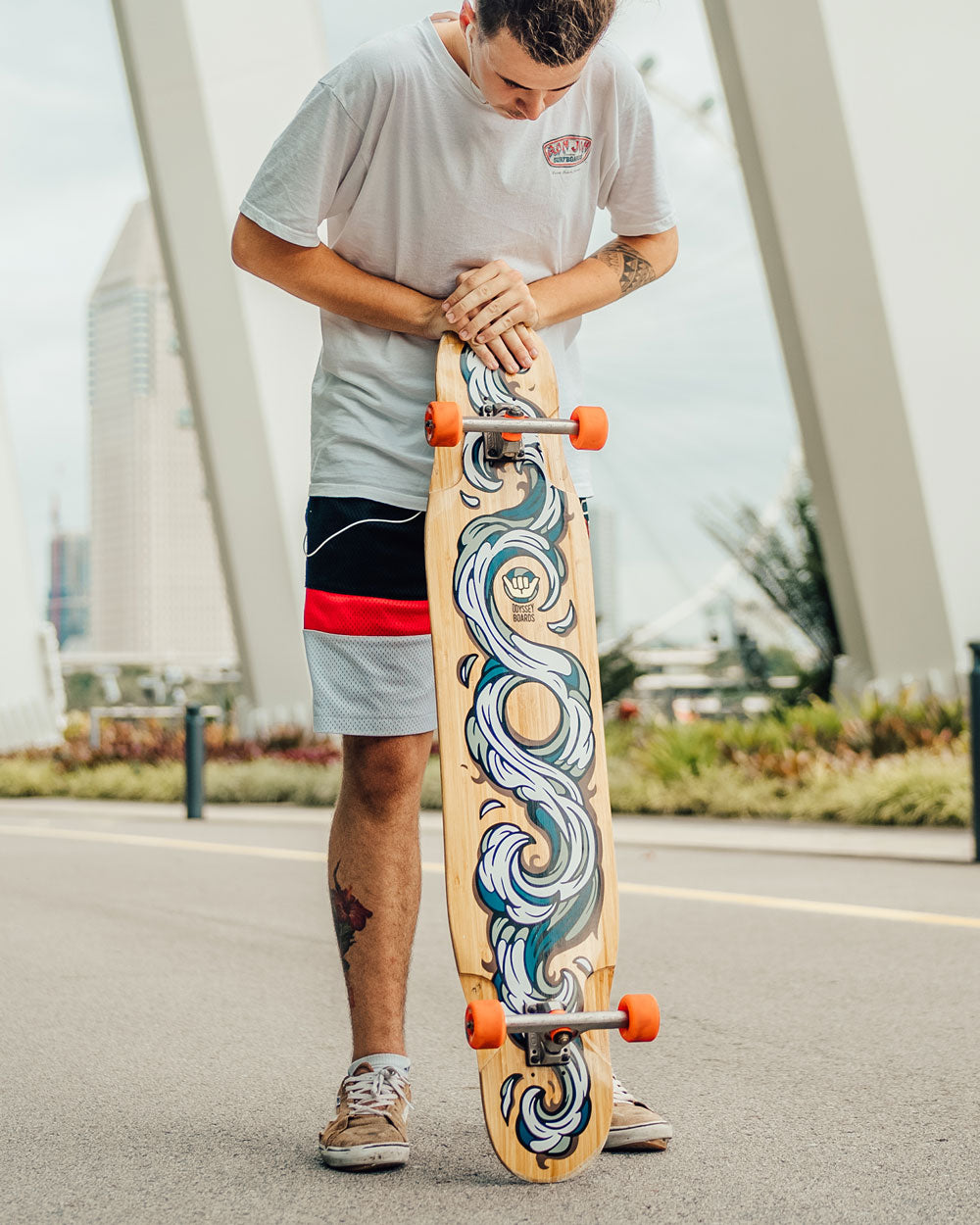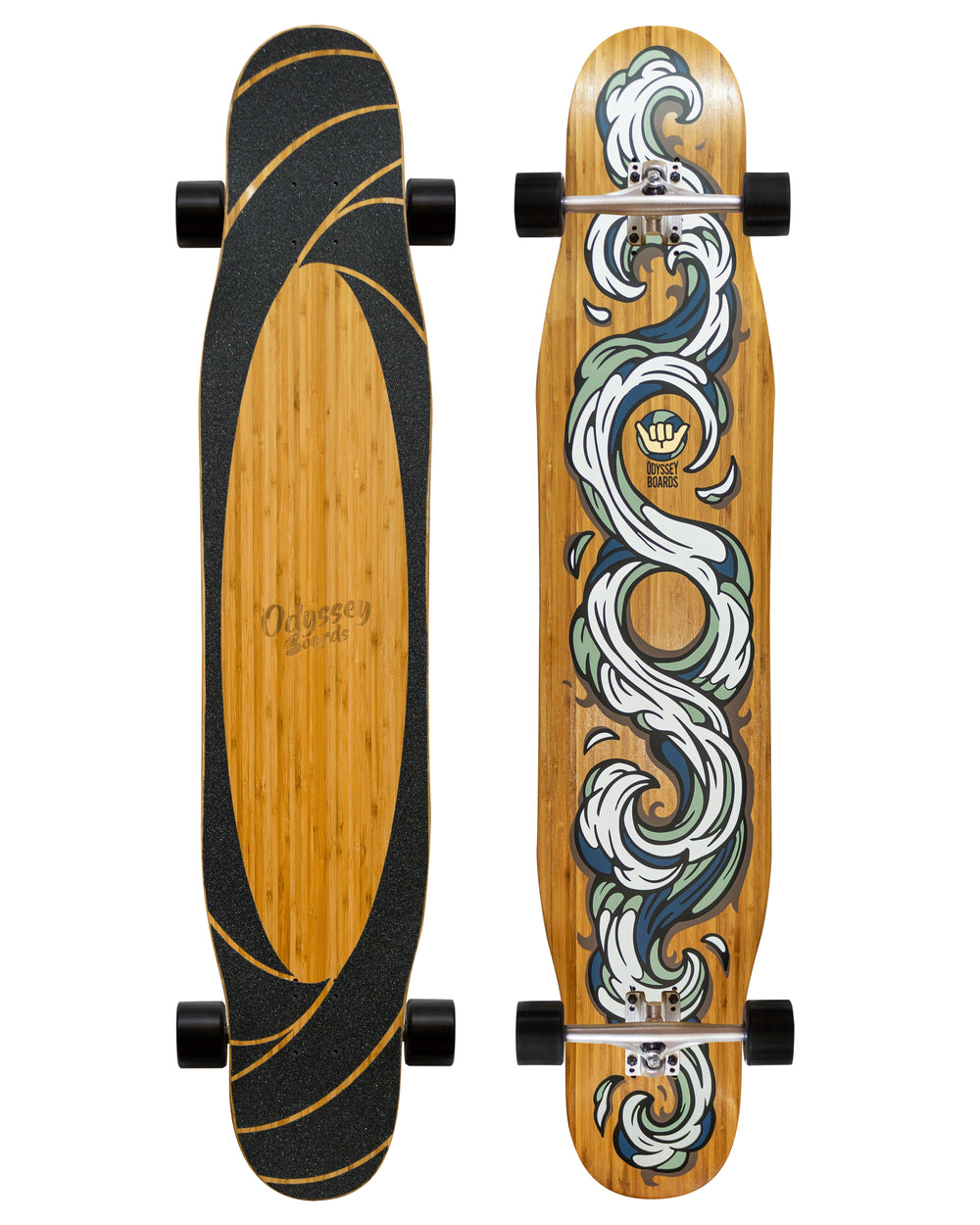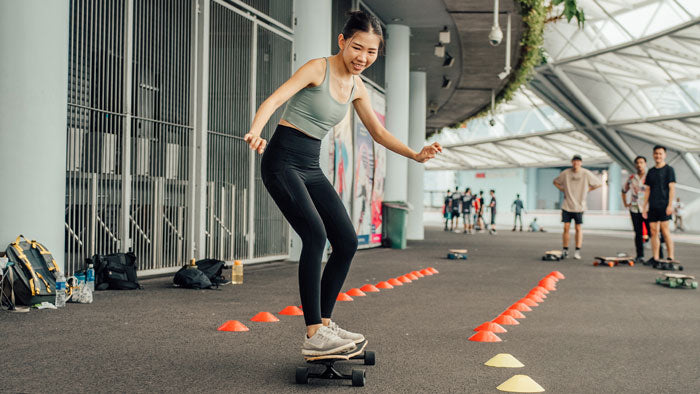4 styles of longboard and how to do them

Since its humble beginnings, longboarding has evolved into many different styles. Around the world, riders have taken them and morphed it into their very own unique blend of styles.
For beginners trying to find out which style you’d like to explore, look no further. In this blog, you’ll learn about the 5 different styles of longboarding and how to get started. Before you do so, I’d recommend you master the basics of longboarding (kicking off, turning and braking). If you’re still working on that, check out our basics guide which will help you tremendously!
Freestyle/Dancing

Source: @h_wai_ on instagram
Freestyle longboarding is the most creative expression yet. Riders do anything they can with the board - from elegant dancing moves to street tricks such as kickflips, shuvits and manuals. Some beginner freestyle tricks include the Tiger Claw, Shuvit and Ghostride Kickflip. Longboard dancing is a subset of freestyle, where the rider moves along the board gracefully. Beginner dance tricks include the 180 Step, Peter Pan and Cross Step.
If you’re interested to learn more, we’ve actually compiled a list of them into a video so you can get started. Check out our guide to the 10 freestyle and dance tricks beginners can start with.
Freestyle longboards are usually over 40 inches long. Longer decks give you more room to dance, while shorter decks are lighter and are more suitable for street tricks. In general, freestyle longboards are symmetrical and have kicktails on both ends. This allows riders to pop the deck and do many more tricks with it. Lastly, freestyle decks have some degree of flexibility to it. This helps absorb some impact from jumping on and off your board.
If you’re looking for a longboard to get started on your freestyle journey, check out a more detailed guide here!
Cruising/Carving

Cruising is the most basic and common longboarding style. It’s used mainly to get around places, either for commuting or to just enjoy the scenery around you. If you’re looking to get a longboard for commuting, why not read our guide on longboard commuting?
Carving is a technique used in cruising, to control your speed, pump or to change directions. It involves shifting your weight between your heels and your toes. Doing so enables you to move in a snake like motion.
The board size depends on whether you’re going for long distance commutes or small sidewalks. Long distance riding will require a longer board to make the ride more comfortable. On the flip side (hey!) you’ll need a shorter board to make sharper turns in smaller sidewalks. Pintail longboards are commonly used for cruising as they look great and they feel great.
Downhill
Downhill longboarding is easily the most dangerous and extreme longboarding style. It’s all about high speeds, drifting, sliding and speed checking. Definitely with this, more protective equipment is required. Typical downhill gear includes your joint guards, gloves with plastic pucks attached to it, and helmets.
Downhill riders ‘bomb’ steep slopes and can go over 100km/h. As of 2018, the fastest speed achieved by a downhill rider is 146.73km/h. Pete Conolly, the downhill rider, got recognized by the Guinness World Records, making his mark in history books and setting the bar really, really high.
Decks for downhill boards can either be drop through or top mount. Drop through decks provide a closer to ground feel and hence more stability for beginner downhill riders. Intermediate riders prefer top mount decks as it gives better grip and more turnability at sharper turns. Typically, a downhill deck is slightly shorter than a freestyle deck - it ranges between 37 to 43 inches. A longboard deck will lack stability if it’s too short, and it’ll lack maneuverability if it’s too long. Lastly, downhill decks are stiffer than freestyle ones as with downhill, you’ll require as much stability as possible.
Freeride
This form of riding is slightly similar to downhill, but involves more creativity in the use of various tricks. Riders perform more slides, spins, change slides and drifting without using their hands. This style is more trick oriented, and therefore not as fast as downhill riders.
For beginners, learning this style can be useful in getting used to speed checks. This means learning various methods of controlling your speed when you’re going fast. However, as this style is riskier, it’ll require more protective gear.
Freeride decks are around the same size as downhill decks, ranging between 38 to 42 inches. Deck styles like drop platform and double-drops have become more common, as they provide a pocket to keep your feet in place. The lowered platform gives riders a better sense of balance and makes sliding much easier. Lastly, again, freeride decks are stiffer in general so they don’t wobble too much when going at high speeds!




